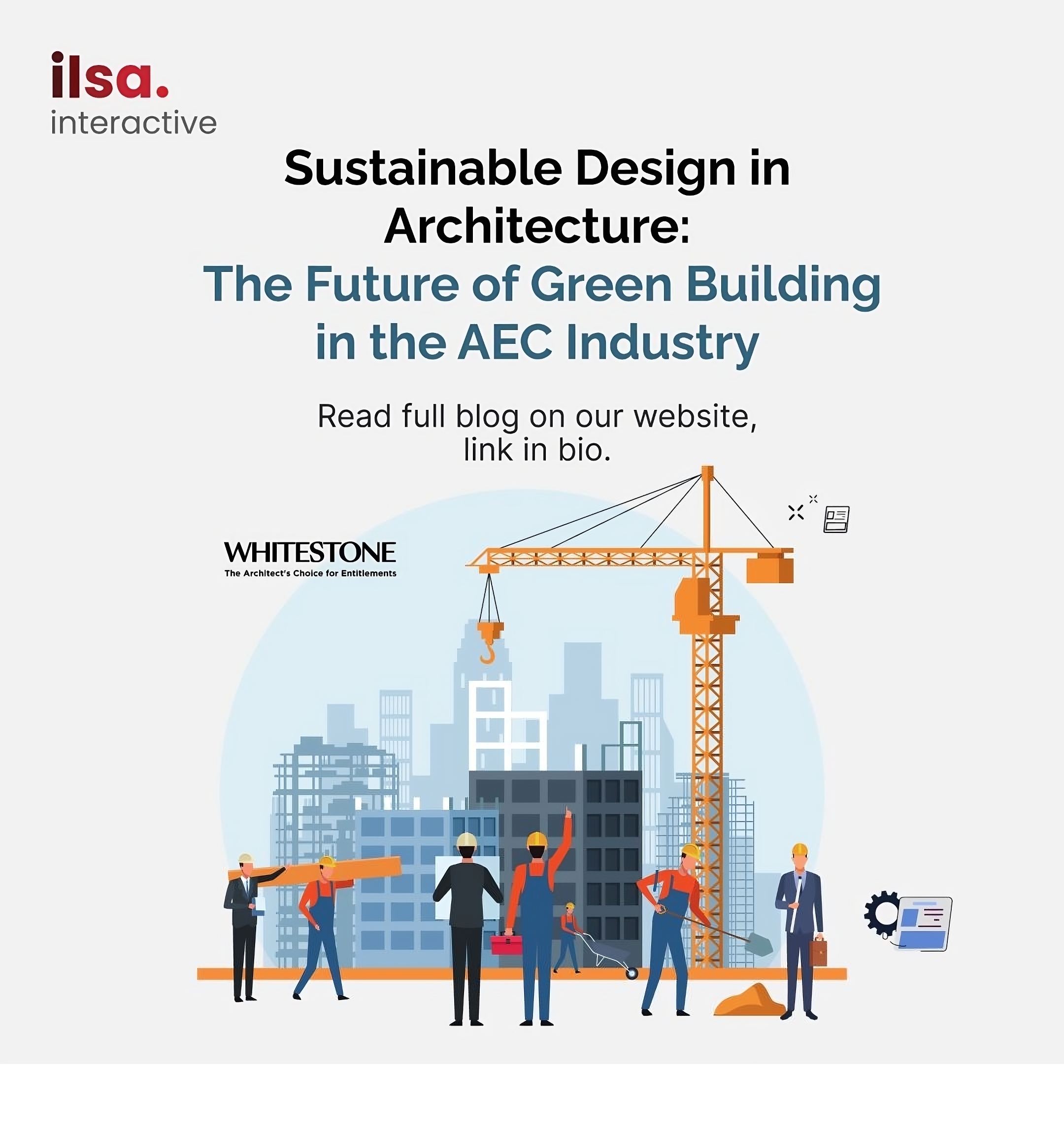Sustainable Design in Architecture: The future of Green
Building in the AEC
Industry.

Introduction
Sustainability is a complex phenomenon. It is vital for human beings because it deals with all human species and every living being on this planet. The increase in human needs has triggered an enormous amount of pressure on scarce and limited resources found on Earth. It is imperative to check this race of human needs development to have a stable, prosperous and safe future for every living organism. This is where the subject of sustainability in AEC project management, sustainable Architecture and green building practices come in.
The importance of Green Building practices in environmental, social and economic fields is acknowledged by all stakeholders affiliated with the AEC industry. On the environmental side, it prevents environmental degradation, reduces pollution and conserves natural resources. Economically, it is cost-productive in terms of spending on water and energy resources. socially, it improves the ambience of the buildings and causes minimum strain on the local infrastructure. Therefore, the future of AEC Industry is heavily tilting towards 'Green Building Practices.
Present State of AEC Industry.
Construction projects are diverse and involve multi-disciplinary teams like working process, design review, and constructability which many a times create friction within themselves. Delays and unanticipated financial costs, errors and omissions in paper-based design documents, and communication hurdles with other stakeholders are a few glaring challenges encountered by the conventional AEC Industry . Moreover, social, environmental and economic factors are pressuring conventional methodologies to adopt a paradigm shift in their strategy and switch to more innovative green building practices and sustainable architecture.
Advancements in urbanization and population increase have increased the emission of CO2 gases into the environment, which has created an adverse effect on greenhouse shields. Therefore, the AEC project management strategy is fast evolving to reduce these effects on the environment by shifting away from the present installed construction methodology and embracing an eco-friendly sustainable architecture strategy.
Principles of Sustainable Design
Sustainable design is defined as an approach, whereby the needs of the present are not met without compromising the ability of future generations to meet their own needs( United Nations 1987). The sustainable character of renewable energy technologies preserves resources, provides security, diversity of energy supply and services, virtually without environmental impact.
Water management using sustainable design is another aspect to dilate upon. Water resources systems that satisfy the changing demands of human needs, without any system degradation, can be called" sustainable" The scarcity of water resources warrants a re-defined strategy which conserves these resources and restores them to their original shape.
Ostensible designs are material, that's why materials are at the heart of innovation and sustainability, but at the same time are pivotal to economic growth. That's why sustainable material innovations are attached to resource efficiency and waste reduction.
Indoor environmental quantity(IEQ) and its effect on occupants' lives are important. Human health is foremost In accessing the comfort of the indoor environment. If the built environment harms human health that is a matter of concern. This negative impact gives birth to sick building syndrome(SBS), Building-related illnesses, and pollutants, which directly and indirectly affect occupants. Therefore, Green building practices or sustainable designs that promote efficient use of resources(e.g. energy, water, and materials) and sustainability that minimize the negative effect of buildings on the environment align with future trends.
Green building certificates and standards
As per the US Environmental Protection Agency, 'Green building is the practice of creating structures and using environmentally responsible processes and resource-efficient throughout a building's life-cycle from design, construction, operation, maintenance, renovation and deconstruction. Therefore, the adoption and development of green buildings support an enhanced environmental awareness of stakeholders, strengthen technology research and communication and formulate relevant policies and regulations. Resulting in the emergence of several green certificates, rating systems and labeling programs e.g.
Evolving Sustainable Design Strategies
The future development of the basic interaction of society, energy, and ecology would be unachievable without the integration of eco-friendly sustainable design strategies.
Business Information Model(BIM) is an innovative technology. This 3D technology is employed in multi-dimensional roles like architecture, engineering and construction AEC professionals. In other words, BIM technology has brought all stakeholders to one dynamic platform linked with the design of the building. Deploying BIM allows its users to subdivide a single project into different phases, thus reaching out to the finest point and giving a clear picture of the project at hand.
Prefabricated and modular construction are identified in line with technological and material innovations. Strengthened by the arrival of BIM( software), it is now easier to incorporate modular units, delivery systems and personnel. Irrespective of the challenges modular construction is a less costly, faster and simpler means of construction supporting wide applications across many building needs. Buzzwords "prefabrication and modular building" and "BIM" have the potential and capacity to promote innovation and development in construction.
The Environmental planning and design discourses of the modern era are dominated by biophilic designs and urban manifestations. Sustainable urban biophilia driven by green skins or living walls for structures and their outlooks are an innovation, built on using ecological design elements of constructed wetlands, enhances in minimizing the urban heat island effect and improves public health in numerous ways.
Successful Sustainable design projects: Case studies.
Conclusion
Sustainable designs are the compass for future innovations and a vital component of the AEC industry. Their integration into AEC construction management holds the key to success for all future projects.